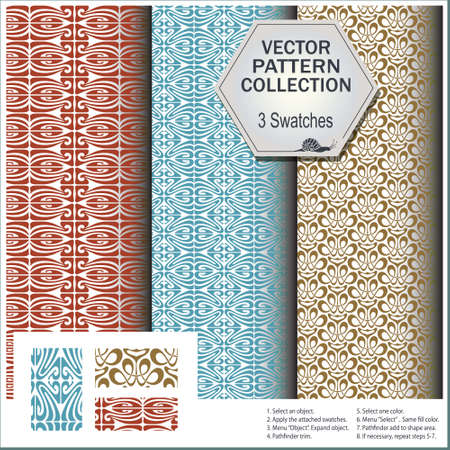Introduction to Vastu Shastra for Kitchens
Vastu Shastra, an ancient Indian science of architecture, plays a pivotal role in shaping the energy and harmony within homes across India. Rooted deeply in Indian traditions, Vastu principles emphasize the balance of the five elements—earth, water, fire, air, and space—to ensure a positive environment that nurtures health and prosperity. In Indian households, the kitchen holds special significance as it is the source of nourishment and well-being for the entire family. According to Vastu Shastra, the direction and layout of a kitchen are crucial as they influence the flow of energy, affecting both physical health and emotional harmony. By following Vastu guidelines for kitchen design, families can harness auspicious energies, promote positivity, and maintain equilibrium within their living spaces. This introduction provides an overview of why adhering to Vastu principles in kitchen planning is considered essential in Indian culture, highlighting its importance in fostering holistic wellness.
2. Ideal Placement and Direction for the Kitchen
According to traditional Vastu Shastra, the kitchen’s placement within an Indian home is of utmost importance for promoting prosperity, health, and family harmony. The direction in which the kitchen is located and where various elements are placed play a significant role in balancing energies and ensuring positive outcomes. Below is a summary table of the most recommended directions for kitchen placement as per Indian customs:
| Element | Recommended Direction | Vastu Significance |
|---|---|---|
| Main Kitchen Location | Southeast (Agni Kon) | Considered ideal, as it aligns with the element of fire (Agni) and brings good health and prosperity. |
| Alternative Location | Northwest (Vayavya) | If Southeast is unavailable, Northwest is preferred; ensures proper ventilation and flow of energy. |
| Avoided Directions | North, Northeast, Southwest | These zones can disrupt financial stability and family peace according to Vastu principles. |
The Southeast corner, known as Agni Kon in Hindi, is traditionally regarded as the most auspicious spot for the kitchen because it harnesses the power of the fire element. This direction supports both physical well-being and positive energy flow throughout the household. If this area is not feasible due to architectural constraints, the Northwest can be considered as a secondary option. It is essential to avoid placing the kitchen in the North or Northeast corners, as these areas are linked with water and air elements, potentially leading to imbalances in health or finances. Furthermore, placing the kitchen in the Southwest may result in conflicts within the family.
When planning your kitchen layout in line with Indian traditions, always consult with a local Vastu expert to ensure that your design harmonizes with both spiritual beliefs and practical needs. By respecting these cultural preferences, you can create a space that not only looks beautiful but also nurtures happiness and well-being for your entire family.

3. Positioning of Essential Kitchen Elements
According to Vastu Shastra, the placement of key kitchen components plays a crucial role in ensuring positive energy and smooth workflow within the heart of your home. Each element should be positioned thoughtfully to maintain harmony and enhance functionality, following age-old Indian traditions.
Stove Placement
In Vastu, the stove represents Agni (fire) and is best located in the southeast corner of the kitchen. This direction is governed by Lord Agni, making it ideal for cooking activities. When using the stove, it is recommended that the cook faces east, which is believed to bring good health and prosperity to the family.
Sink Position
The sink, which symbolizes water, should ideally be placed in the northeast direction of the kitchen. It is important to keep the stove and sink apart as fire and water are opposing elements in Vastu principles. Maintaining distance between them ensures a balanced flow of energies and prevents conflicts within the household.
Refrigerator Location
The refrigerator can be placed in the southwest, west, or north direction of the kitchen. Avoid placing it in the northeast corner, as this may disrupt the inflow of positive energy. The fridge should also not block any entryways or windows, maintaining free movement and ventilation within the space.
Storage Arrangements
Heavy storage units such as cupboards and grain containers are best positioned in the south or west walls of the kitchen. This aligns with Vastu’s guidance to store heavy items on these sides to create stability and support in life. Overhead cabinets should not be installed above the stove to allow unrestricted upward movement of heat and energy.
Integrating Functionality with Tradition
By carefully positioning each essential kitchen element according to Vastu norms, Indian households can achieve a harmonious blend of tradition and modern convenience. Following these guidelines not only enhances daily functionality but also promotes peace, well-being, and prosperity for everyone at home.
4. Colour Schemes and Materials According to Vastu
When designing a kitchen as per Vastu Shastra, the selection of colours and building materials plays a pivotal role in fostering positivity and good health for your family. Indian traditions emphasise the use of certain colour palettes and natural materials, which are believed to attract prosperity and harmony into your home. Below are expert recommendations for choosing the right hues and elements for your kitchen:
Recommended Colour Palettes for Kitchen Spaces
According to Vastu, the kitchen is ruled by the Fire element (Agni), so it is advised to use warm yet balanced shades that reflect this energy. Avoid dark or dull colours, as they may bring negativity or reduce appetite. Here’s a quick reference guide:
| Colour | Vastu Significance | Ideal Application Area |
|---|---|---|
| Yellow | Symbolises nourishment & happiness; enhances digestion | Walls, cabinets, tiles |
| Orange | Promotes enthusiasm & warmth; aligns with fire element | Backsplash, accents |
| Green | Represents freshness & growth; calming effect | Curtains, storage units |
| Cream/Beige | Adds lightness & purity; increases spaciousness | Main wall paint, ceiling |
| White | Purity & cleanliness; ensures positive vibrations | Shelves, countertops (as accents) |
| Avoid: Black/Dark Blue | Absorbs energy; considered inauspicious for kitchens in Vastu | – |
Preferred Building Materials According to Indian Traditions
Selecting natural and vastu-compliant materials not only contributes to a healthy cooking environment but also aligns with traditional Indian values. Here are some recommended choices:
| Material Type | Vastu Benefits | Common Uses in Kitchen Design |
|---|---|---|
| Granite (light-coloured) | Durable, non-toxic, supports positive flow of energy | Countertops, flooring |
| Ceramic Tiles (glossy finish) | Easy to clean, reflective surfaces enhance brightness and positivity | Backsplashes, walls, floors |
| Wood (treated/natural) | Adds warmth, organic feel; promotes prosperity per tradition | Shelves, cabinets, dining areas within kitchen space |
| Avoid: Metal Surfaces in Excess (especially black iron) | Might create imbalance in energy flow if overused according to Vastu principles | – |
| Avoid: Synthetic Laminates with Dark Colours or Loud Patterns | Might disrupt harmonious energy; can cause restlessness among family members | – |
Traditional Indian Considerations for Modern Homes
If you live in urban apartments or compact houses, you can still follow these Vastu guidelines by choosing pastel shades from the recommended palette and opting for eco-friendly materials that echo natural elements. Always ensure ample lighting and ventilation to maintain a vibrant atmosphere—a crucial aspect as per Indian customs. By integrating these colour schemes and materials into your kitchen design, you create a space that not only looks aesthetically pleasing but also radiates auspiciousness and positivity aligned with centuries-old Indian wisdom.
5. Common Vastu Dos and Don’ts for Kitchens
Key Vastu Dos for Kitchen Design
To ensure your kitchen radiates positive energy and supports health and prosperity, follow these important Vastu dos.
Placement of Cooking Stove
The stove should be positioned in the southeast corner of the kitchen, as Agni, the fire element, is believed to reside there. While cooking, always face east to attract good fortune and keep negativity at bay.
Proper Ventilation
Good ventilation is essential. Install windows or exhaust fans in the eastern or southern wall to allow fresh air and sunlight, which help purify the kitchen environment according to Indian traditions.
Water Elements Location
Keep sinks, water filters, and other water sources in the northeast direction. This placement ensures harmony between the water and fire elements, which is vital for maintaining balance in your home.
Frequent Vastu Mistakes to Avoid
Many Indian households unknowingly make errors that disrupt Vastu balance. Here are some common mistakes to avoid:
Mixing Fire and Water Elements
Avoid placing the stove (fire) next to or directly opposite the sink or refrigerator (water). This opposition creates a clash of elements, leading to conflicts and health issues within the family.
Improper Placement of Storage
Heavy storage units like grain boxes or utensils should be placed in the south or west direction. Placing them in the northeast can obstruct positive energy flow and hinder prosperity.
Cluttered Kitchen Spaces
A cluttered kitchen attracts negative vibes. Keep countertops clean and organized, disposing of broken utensils and expired food promptly as per traditional Indian beliefs.
Additional Cultural Tips for Indian Homes
Use natural materials such as wood or stone for cabinets and countertops, which resonate well with Vastu principles. Regularly clean the kitchen floor with salt water to purify the space energetically, a common Indian practice for inviting abundance.
Conclusion
By following these Vastu dos and don’ts in your kitchen design, you align your home with ancient Indian wisdom—ensuring well-being, prosperity, and harmony for your family.
6. Integrating Modern Appliances with Vastu Principles
In todays fast-paced Indian households, modern kitchen appliances like microwave ovens, dishwashers, chimneys, and refrigerators have become indispensable. However, aligning these technological conveniences with age-old Vastu Shastra principles can seem challenging. By following a few practical suggestions, you can enjoy the benefits of contemporary gadgets without compromising on positive energy and harmony in your kitchen space.
Placement of Major Appliances
According to Vastu, the southeast corner (Agni Kon) is ideal for placing heat-generating appliances such as ovens, microwaves, and gas stoves. This direction symbolises the fire element, making it perfect for cooking activities. Refrigerators should preferably be placed in the southwest or northwest corners but never directly in the northeast zone, which should be kept light and clutter-free to attract prosperity and health.
Balancing Technology with Tradition
When introducing modern appliances into your kitchen, ensure they do not obstruct traditional Vastu layouts. For example, avoid placing heavy electrical equipment opposite or adjacent to the main cooking range to prevent energy clashes. If you need to install a water purifier or dishwasher, position them towards the northeast or north to complement the water element and enhance positive vibrations.
Catering to the Indian Lifestyle
Indian kitchens often cater to large families and diverse cuisines, requiring both efficiency and adherence to tradition. Opt for modular kitchen designs that allow flexible placement of appliances while respecting Vastu directions. Concealed wiring and built-in units help maintain an uncluttered look, supporting both aesthetics and spiritual well-being.
Final Suggestions for Harmonious Integration
Regularly clean and maintain all appliances to prevent stagnant energy. Choose appliance colours that harmonise with your kitchen’s palette—preferably warm shades for southeast zones and cool tones for northern areas. By thoughtfully blending technology with tradition, you create a kitchen that supports modern living while upholding the timeless wisdom of Vastu Shastra.

